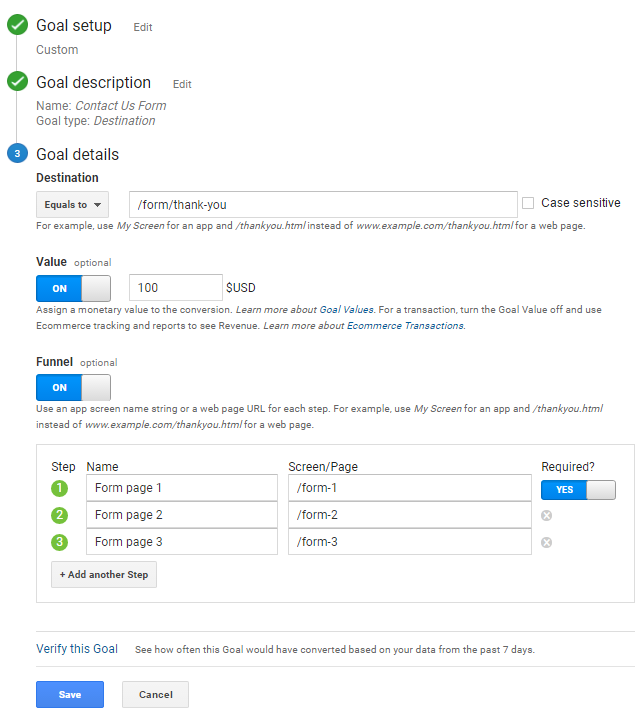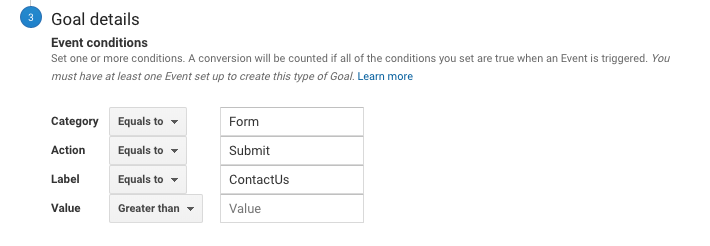What Data Is Google Analytics Goals Unable to Track and Why
What Data Is Google Analytics Goals Unable to Track and Why
Blog Article
Discover the Limitations of Google Analytics Goals: Revealing the Information Kind That Remain Untrackable
As companies progressively count on data-driven decision-making, comprehending the restrictions of tools like Google Analytics becomes paramount. While Google Analytics Goals deal important insights into customer interactions, there exist data kinds that avoid monitoring, posturing obstacles to a detailed understanding of individual actions. These untrackable data types raise inquiries about the precision and completeness of the analytics information that organizations greatly rely upon for their electronic techniques. Interested to reveal the concealed blind spots in your data evaluation procedure?
Incomplete User Trip Tracking
Incomplete customer trip tracking within Google Analytics can prevent the capacity to properly evaluate individual habits. When the individual journey is not totally tracked, there are gaps in the data that prevent a thorough understanding of exactly how customers engage with an internet site. This absence of understanding can bring about missed out on opportunities for optimization and improvements to the user experience.
One common issue with incomplete user trip monitoring is the lack of ability to see the complete course that individuals take in the past completing a goal or leaving the website. Without this details, it is testing to recognize where individuals might be running into barriers or friction points that stop them from transforming. In addition, insufficient monitoring can cover the effect of specific advertising efforts or website adjustments on customer habits.
To address this restriction, it is important to establish up correct tracking mechanisms within Google Analytics to record the whole customer journey. This might include setting up occasion tracking, objective funnels, or using tools like Google Tag Supervisor to make sure that no essential interactions go unrecorded. By gaining a thorough sight of the user trip, web site proprietors can make more enlightened choices to enhance customer engagement and drive conversions.
Acknowledgment Difficulties
Browsing through attribution difficulties in Google Analytics requires a detailed understanding of how different touchpoints contribute to the general conversion process. Attribution difficulties emerge from the intricacy of modern client journeys, where individuals engage with numerous networks prior to converting.
One typical acknowledgment obstacle is the difficulty in connecting conversions to the right source, particularly in situations where users connect with numerous networks prior to transforming. This can bring about errors in determining which marketing initiatives are driving the most conversions. Additionally, cross-device tracking presents an additional attribution difficulty, as individuals commonly switch over between devices throughout their trip, making it challenging to track their interactions perfectly. Marketing experts must very carefully evaluate and interpret attribution data to make enlightened choices and enhance their marketing approaches successfully.
Offline Conversions
Given the obstacles related to associating conversions precisely in online channels, the measurement of offline conversions presents a significant possibility for marketing professionals looking for an extra extensive understanding of their consumers' journey. Offline conversions describe actions that clients absorb the physical globe, such as making purchases in brick-and-mortar shops or over the phone, attending events, or involving with printed materials - what data is google analytics goals unable to track. These conversions are essential for organizations that operate both online and offline, as they supply valuable insights into the performance of advertising campaigns throughout numerous touchpoints
Tracking offline conversions generally postured a significant obstacle for marketing professionals, as it was testing to link these activities back to particular on the internet communications accurately. With advancements in technology, such as the integration of CRM systems, one-of-a-kind identifiers, and coupon codes, companies can now bridge the space between online and offline data to gain a more alternative view of customer actions. By efficiently determining offline conversions, marketing professionals can enhance their approaches, designate resources extra successfully, and inevitably boost the general client experience.
Cross-Device Monitoring
Cross-device tracking plays an essential duty in recognizing the interconnected nature of customers' digital interactions across several tools. In today's omnichannel globe, where users perfectly switch over in between tablet computers, desktops, and mobile phones, tracking their behavior across these tools is crucial for marketers to obtain an extensive sight of their customer trip.

Furthermore, personal privacy issues and guidelines such as GDPR and CCPA have better complicated cross-device monitoring. With individuals demanding more control over their information and increased restrictions on tracking technologies, marketing professionals must find privacy-compliant and ingenious ways to connect individual interactions throughout tools.
Dynamic Web Content Involvement
Understanding individual involvement with vibrant material is essential in enhancing electronic advertising and marketing approaches for improved target market interaction. Dynamic content refers to site aspects that alter based on customer actions, preferences, or other variables, supplying a tailored experience. Tracking user see this site communications with dynamic material positions challenges for standard analytics tools like Google Analytics.
While Google Analytics can track basic interactions like clicks and web page views, it might battle to record more nuanced involvements within dynamic content. what data is google analytics goals unable to track. Metrics such as time spent on certain dynamic components, hover activities, or interactions within pop-ups are frequently not conveniently measurable making use why not look here of typical monitoring techniques. This restriction impedes online marketers' capacity to totally understand just how users are engaging with dynamic material and customize their strategies as necessary

Final Thought
Finally, Google Analytics goals have restrictions in tracking insufficient user journeys, associating conversions properly, recording offline conversions, tracking cross-device interactions, and determining vibrant content engagement. These constraints highlight the value of exploring extra tracking techniques and tools to acquire a more comprehensive understanding of user actions and conversions beyond what Google Analytics can offer.
While Google Analytics Goals deal beneficial understandings right into user communications, there exist information kinds that elude tracking, presenting difficulties to a thorough understanding of customer behavior.Incomplete customer trip monitoring within Google Analytics can hinder the ability to properly assess user behavior. When the user trip is not completely tracked, there are voids in the data that prevent a comprehensive understanding of how individuals engage with an internet site.One typical problem with incomplete individual journey tracking is the lack of ability to see the complete path that users take in the find out past finishing an objective or leaving the site. By gaining a detailed sight of the customer trip, site owners can make more informed choices to improve user involvement and drive conversions.
Report this page